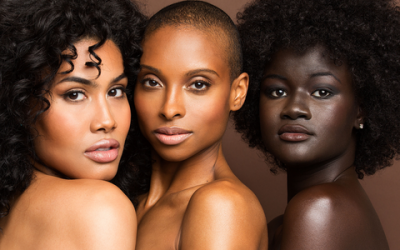Colourism and shadeism is a form of discrimination that favours people with lighter skin over those with darker skin. It is often discussed in relation to skin tone but can also refer to hair texture, eye colour, and other physical features. The preference for light skin is an old and deeply-rooted issue that has its origins in slavery when light-skinned enslaved people were often treated better than their dark-skinned counterparts. To this day, colourism continues to thrive, often affecting people’s professional and personal lives.
What are the different types of Colourism?
There are three different types of colourism:
1. Skin tone favouritism: People with lighter skin tones are given preferential treatment over those with darker skin tones. This can be done consciously or unconsciously.
2. Colour bias: People make assumptions or judgments about someone based on their skin colour. For example, they may assume that a person with a darker skin tone is not intelligent or is not capable of doing certain things.
3. Colour discrimination: People are treated unfairly or unfairly targeted because of their skin colour. This can be verbal abuse, violence, or even exclusion from social activities or events.
Unlike racial bias, which is typically perpetrated by individuals from one racial group, race against those of another, colourism is also frequently found among members of the same ethnic or racial group.
These preferences start early in life. A CNN study in 2010 found that children of all races assigned negative attributes to cartoon characters with darker skin tones when asked to identify those who were “pretty” or “smart”.
How does Hollywood perpetuate Colourism?
Hollywood perpetuates colourism by giving preference to light-skinned actors and actresses. This can be seen in how they are often cast in lead roles, while darker-skinned actors and actresses are given supporting roles or are not cast at all.
Because Hollywood and the beauty industry portray lighter skin as desirable, many dark-skinned people worldwide have turned to lightening their skin to conform to these terrible beauty standards.
Colourism is an issue that affects everyone differently, and it is important to acknowledge that not everyone experiences colourism in the same way. For example, mixed race and lighter-skinned black people benefit from colourism through their proximity to whiteness. Those with darker skin suffer because they are too visibly different from those at the top of the racial hierarchy.
Additionally, not all people within a particular racial group experience colourism in the same way – for example, light-skinned black women may experience greater levels of privilege than dark-skinned black women. It is important to remember that colourism is a complex issue that impacts people differently.
What can be done to end colourism?
No one answer will work to end colourism. However, various steps can be taken to try and address the issue.
Some measures that could be taken are as follows:
- Educating people on the history and effects of colourism and raising awareness of the issue.
- Challenging the prevailing beauty standards which favour those with lighter skin tones.
- Promoting positive images of people of all skin colours in the media and other forms of popular culture.
- Creating opportunities for people of all skin tones to participate in decision-making processes and have their voices heard.
- Providing resources and support for individuals who experience discrimination or prejudice based on their skin tone.






Leave a Reply